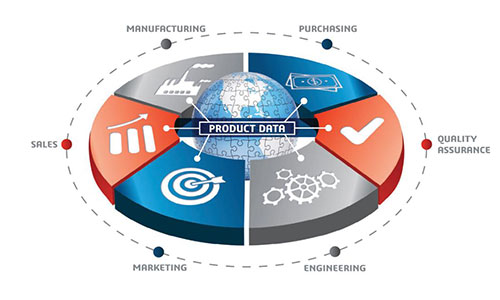We’re all familiar with the start of a new project; Producing a folder structure, creating standard documents and filling in copious amounts of data before you’ve even started on your design. These are all repetitive, laborious, manual tasks, but with a SOLIDWORKS PDM solution they don’t need to be. So, SOLIDWORKS PDM Standard Vs Professional – what’s the difference and which one is best for you? Let’s find out…
Video: SOLIDWORKS PDM Standard vs Professional
SOLIDWORKS PDM Standard vs Professional
[Video transcript below]
Over the next few minutes we’ll take you through the differences between SOLIDWORKS PDM Standard and SOLIDWORKS PDM Professional we will compare the differences in automation between the two.
A project typically begins with the creation of a folder structure to store your files. In SOLIDWORKS PDM Standard this process is manual, with folder and file creation following the same technique used in Windows Explorer. Some information can be inherited from top level folders, however, serial numbers are not possible in SOLIDWORKS PDM Standard. These items would have to be manually assigned and monitored.
SOLIDWORKS PDM Professional includes a facility to create templates, which can be used to capture information like customer name or project number. These values can be pulled from lists or manually entered. On the creation of a new folder, sub-folders and documents can also be created, with serial numbers reading to file names if desired. Data can also be inherited from the top-level folder. Perfect if you don’t like filling in information twice.
Once the project is created and your SOLIDWORKS models are built, an Engineering Change document may be required. In SOLIDWORKS PDM Standard, this document would be manually created, filled in and added to the vault. It would also need to follow the CAD Document workflow allowing for revision control. However, we couldn’t preview the document when browsing the vault. A link could also be created between this file and The CAD data, so it can be checked out simultaneously. This would have to be added manually, however.

In SOLIDWORKS PDM Professional, the creation of the document can be triggered on a workflow transition, it can inherit properties from folders. An Automatic link could be created between this file and The CAD data, So, files that are under an Engineering Change can be checked out and locked if required. Because this is created in a workflow, notifications can be sent to key users. The document can also follow a separate approval procedure. From a usability point of view the file can be previewed when browsing the vault, too.
When it comes to automating file exports, SOLIDWORKS PDM standard can only produce PDF files, and place them in the same vault as the CAD Drawing – which means only users who have access to SOLIDWORKS PDM can see them.
SOLIDWORKS PDM Professional brings a greater level of flexibility allowing exported files to be stored anywhere. It also extends the export types to multiple file formats like Step and IGES. These exports can be triggered on any workflow transition, meaning other tasks, like printing all drawings, could be done once a project was approved.
Price is one area where SOLIDWORKS PDM standard has the upper hand. There’s less configuration involved with setting up the system. So typically, prices will be cheaper. If you already have SOLIDWORKS Professional or above, SOLIDWORKS PDM standard is included with your subscription, so less software costs to worry about.
Because of the extended functionality, SOLIDWORKS PDM Professional carries a higher cost than SOLIDWORKS PDM Standard. This applies to both the configuration and licensing. However, the scope for automation, bespoke tasks and things like replication (multi-site setup) make it a much more functional product. The upgrade route from Standard to Professional is seamless – so if you are just starting out, you can implement SOLIDWORKS PDM Standard with a view to upgrading at a later date.
Innova systems have transitioned many companies onto the two PDM systems shown in this video. These companies are now experiencing the benefits of an easy to use data management system.


















